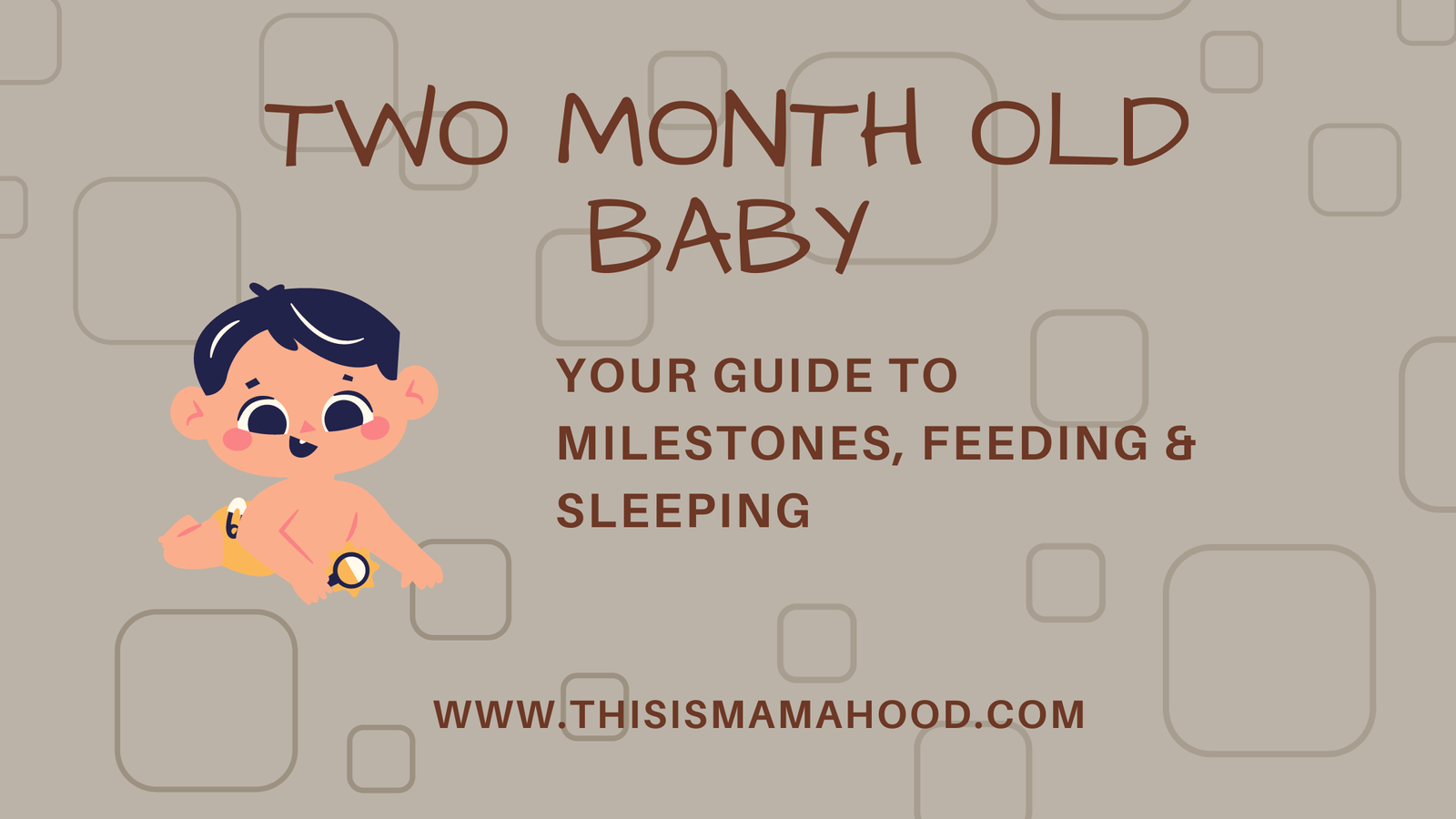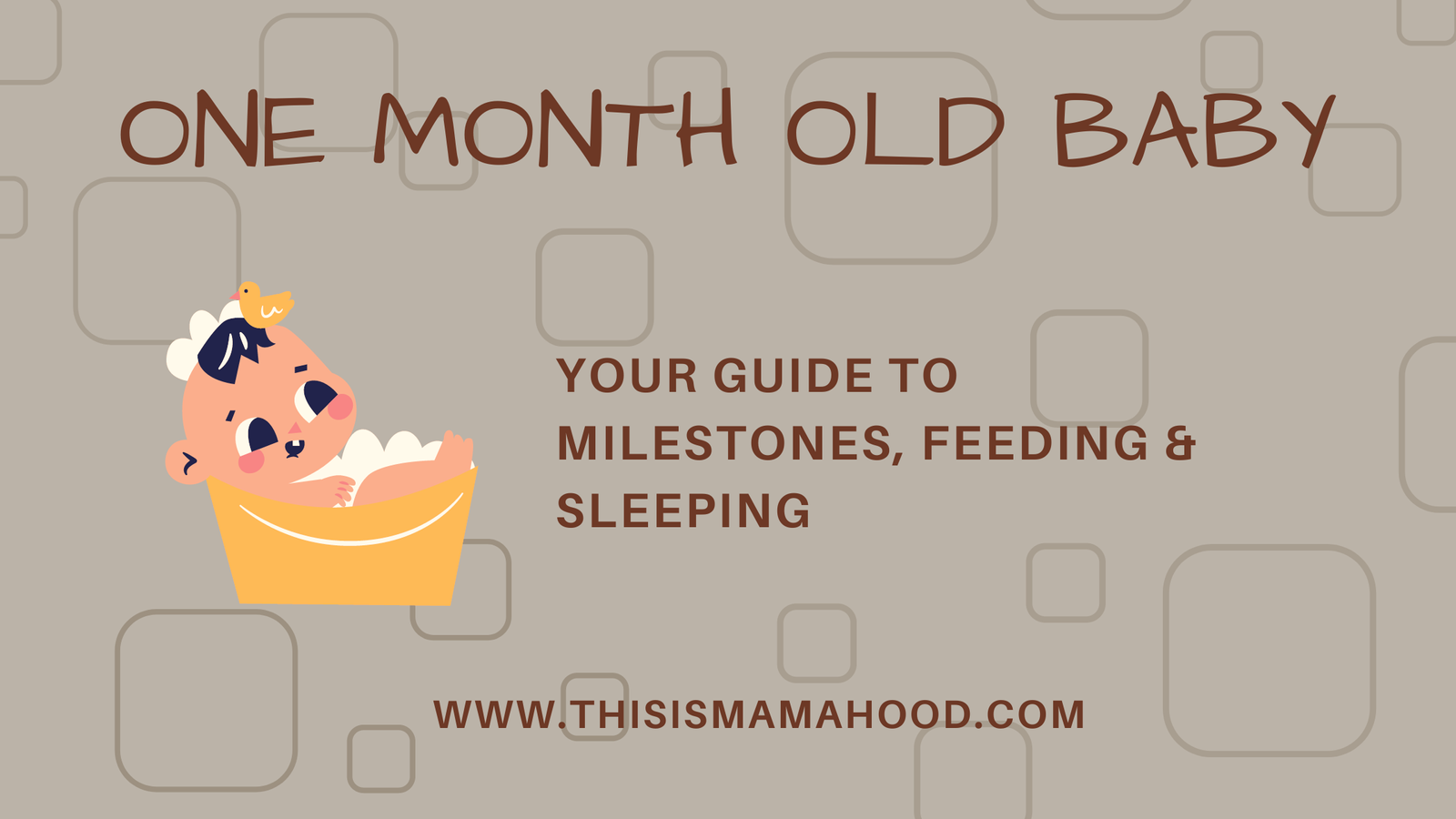Overview
Now that you have a two-month-old baby, you are probably starting to feel the rewards of parenting. Your little one is now staying awake for longer periods of time. This means more time to bond and play. Your baby should also be smiling in response to seeing you, and those little gummy smiles are sure to melt your heart every time.
Two-month-old baby milestones
Physical movement
At two months old, your baby should be able to move both their arms and legs. They should be able to extend and retract their arms and legs back to their body. They should also be able to open their hands briefly and return them back into a fist. While laying on their tummy, two-month-old babies should be able to lift up their head and look around.
Communication
Babies at two months old should react to loud noises, either by being startled or by looking around to find the noise. They should also start to make sounds other than crying, such as cooing. Be sure to talk to your baby throughout the day so they can begin to recognize different sounds and words.
Emotional & Social
You should notice that your baby starts to smile in response to things you do, such as talking or looking at them. These little toothless smiles will surely excite you and remind you that parenthood is not all one-sided. Babies this age should also start to calm down when picked up. You may notice that your little one always wants to be held and will cry every time you place them down. Many parents find that baby-wearing can help with this. Invest in a suitable carrier, that way you can still get things done while having your baby held close to your body.
Sleeping guide for a 2-month-old baby
At two months old, your baby will still need around 14-17 hours of sleep each day, broken into several naps throughout the day and some longer stretches at night. Your baby isn’t likely sleeping through the night yet, but you should find that they are sleeping for longer durations during the nighttime. They may only be waking 2 or 3 times each night. If they are sleeping soundly, there is no need to wake them at night for feeding.
For daytime sleep, your baby is likely taking 3 or 4 naps during the day, ranging in length from 20 minutes to 2 hours. However, more naps are perfectly fine. Soon, you should find that you will be able to settle your baby into a routine consisting of 3 daytime naps.

Feeding guide for a 2-month-old baby
Breastfeeding
If you are breastfeeding, you should continue to feed on demand. You should expect to have at least 8 sessions each day; however many babies will demand more. You may notice that your baby is eating at more predictable times, compared to the newborn stage when the feeding schedule was all over the place. However, you should still follow your baby’s lead on when to breastfeed, as it is difficult to gauge how much they eat during each session.
Formula Feeding
If you are formula or bottle feeding your 2-month-old, you should expect that they are now drinking 5-6 ounces at a time. Babies at this age can go more extended periods between feeds, about 4-5 hours. You do not need to wake your baby to eat.
What can my 2-month-old eat?
At 2 months old, your baby is not yet old enough to be eating anything other than breastmilk or formula. It will still be a few months before your baby can indulge in solid foods. They also do not need to drink water at this age, as they will get enough hydration through the milk they are drinking.
How do I play with my 2-month-old?
Your baby will be spending more and more time awake during the day now. That leaves a lot of time open for play. You may be wondering what kind of activities are suitable for a two-month-old baby. Good activity choices for babies include reading books and looking at pictures. Try to choose interactive books that have flaps to open and can make different sounds, such as a crinkle book. Books and pictures that are brightly colored and simple are sure to get your baby’s attention.
Walks are also a good activity for babies at this age. You can place them in a stroller or carrier and take them along for a leisurely stroll around the neighborhood or at a park. There are lots of different things to see and hear outside that will help to engage your baby. You can also talk to them about what they are seeing and hearing.
Don’t forget to engage your 2-month-old in tummy time every day. You can do tummy time for as long as your baby allows, several times each day. Your baby should be able to lift their head up off the ground and may also start to lift their arms out. Placing bright pictures and a mirror in front of your baby will encourage them to keep lifting their head up. You may also want to set some toys out within reach to encourage your little one to move their arms and try to touch them.
How to care for my 2-month-old baby?
Health check
Your baby will have a two-month well check at their doctor’s office. During this appointment, their length and weight will be recorded and compared to previous records to ensure they are growing well. They will also have a physical examination. This will include checking their eyes, listening to their heart and lungs, and checking their hips. Make sure that you go over any questions that you may have with the doctor.
Vaccines
If you choose to vaccinate your child, they will have their first round of vaccines at two months old. The vaccinations at this age are for:
- diphtheria, tetanus, pertussis, polio, haemophilus influenza type b
- pneumococcal conjugate
- rotavirus
Vaccines will be administered via a needle in the thigh. Some babies may experience a slight fever in response to the vaccination. This is a common side effect and can be treated with children’s Tylenol.
It is important to discuss with your doctor the need for vaccinations in babies and if vaccinating your baby is the right choice for your family.
Schedule for a 2-month old
At two months old, your baby will have wake windows of around 60-90 minutes. You may not be able to settle into a structured schedule yet; however, you will find that your baby’s sleeping and eating habits are becoming more predictable.
You should be following a schedule consisting of waking, eating, playing, sleeping, and repeating. You may find that having a dedicated morning and nighttime schedule will help your baby to decipher between nighttime sleep and daytime sleep. This will allow them to sleep longer, and hopefully throughout the night.




